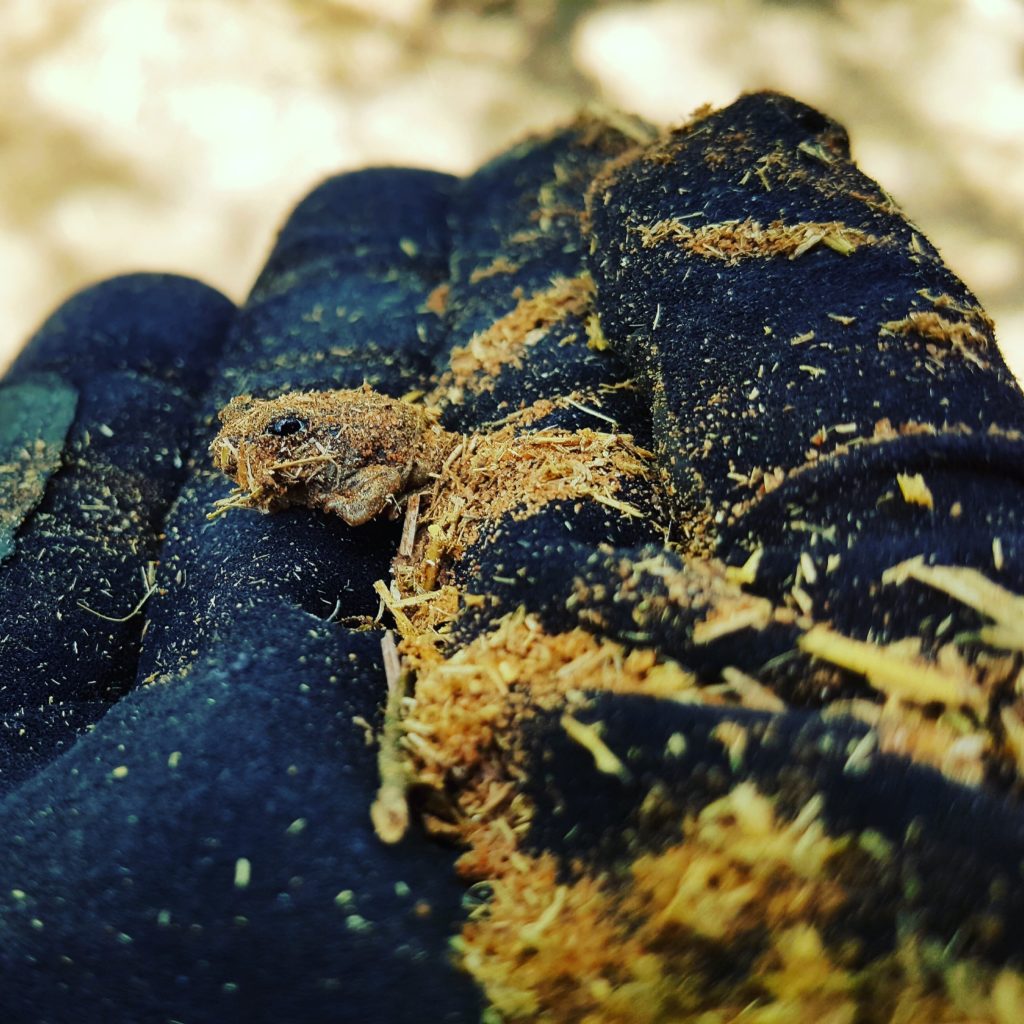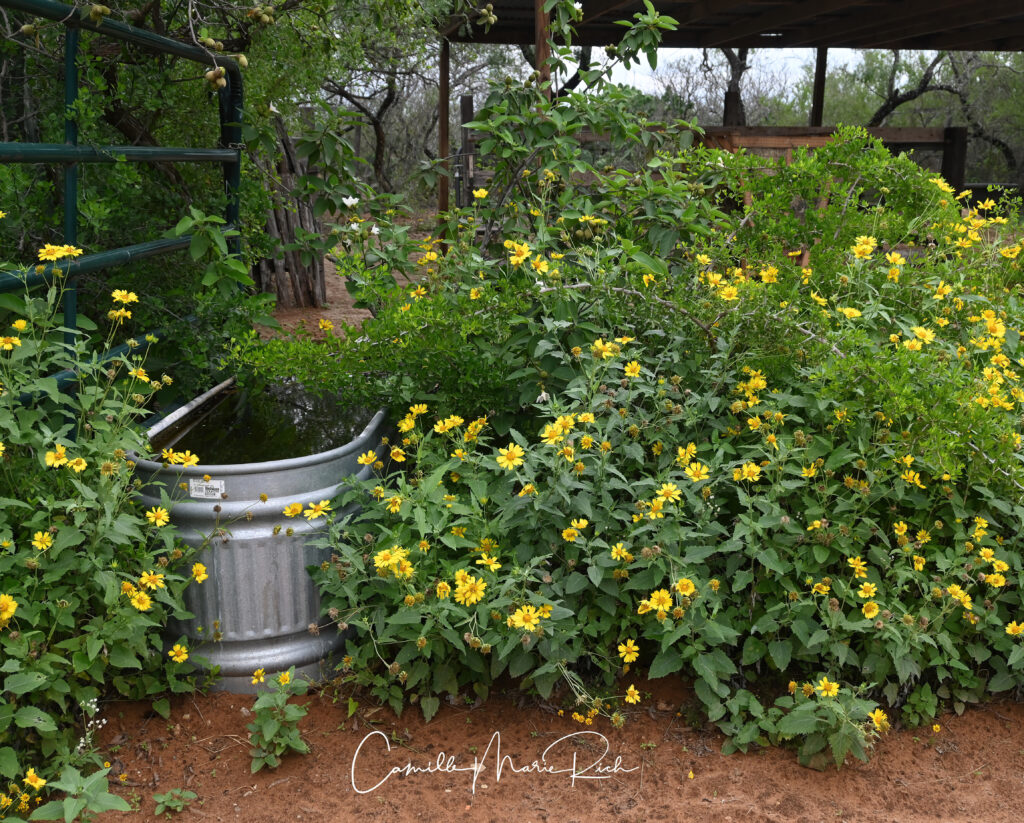
I have some Bailey’s ball moss in my backyard that I enjoy tremendously. Some were given to me by friends while others I picked up at either festivals or events and meetings that were part of both the Texas Master Naturalist program and the Native Plant Project. I have had them for several years now and am always amazed when they are in bloom. Their delicate, tiny flowers in hues of blue and violet, are always a nice surprise and joy to behold.
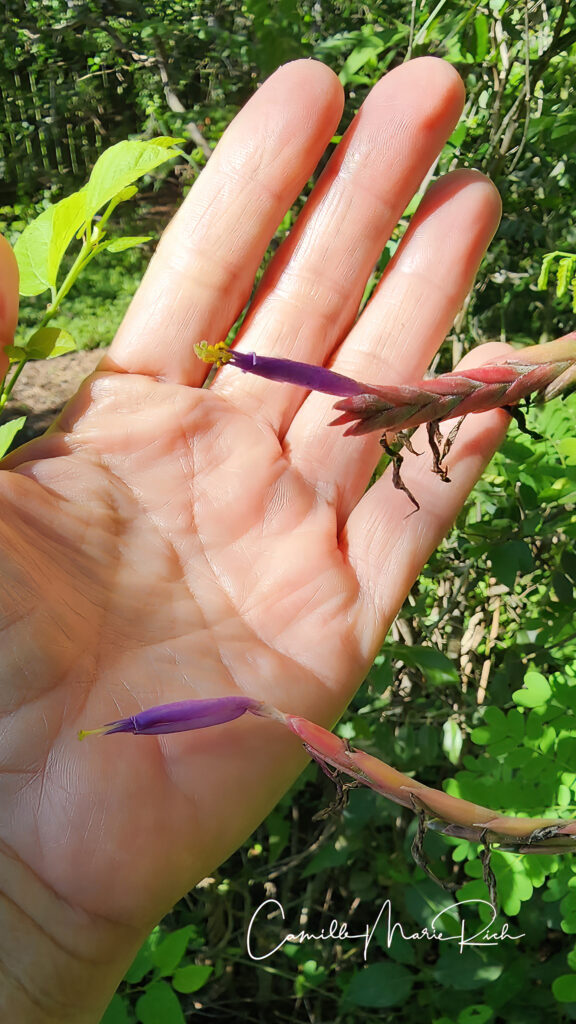
Recently, while out watering plants one muggy morning, I noticed that a couple of dried fruit capsules on one of my Bailey’s ball moss individuals had split open into three parts, and inside each of the split capsules, small, thin, filament type seeds were bursting forth—just waiting to float out into my backyard ecosystem on the gusty, strong wind currents and start the Bailey’s ball moss life cycle all over again.
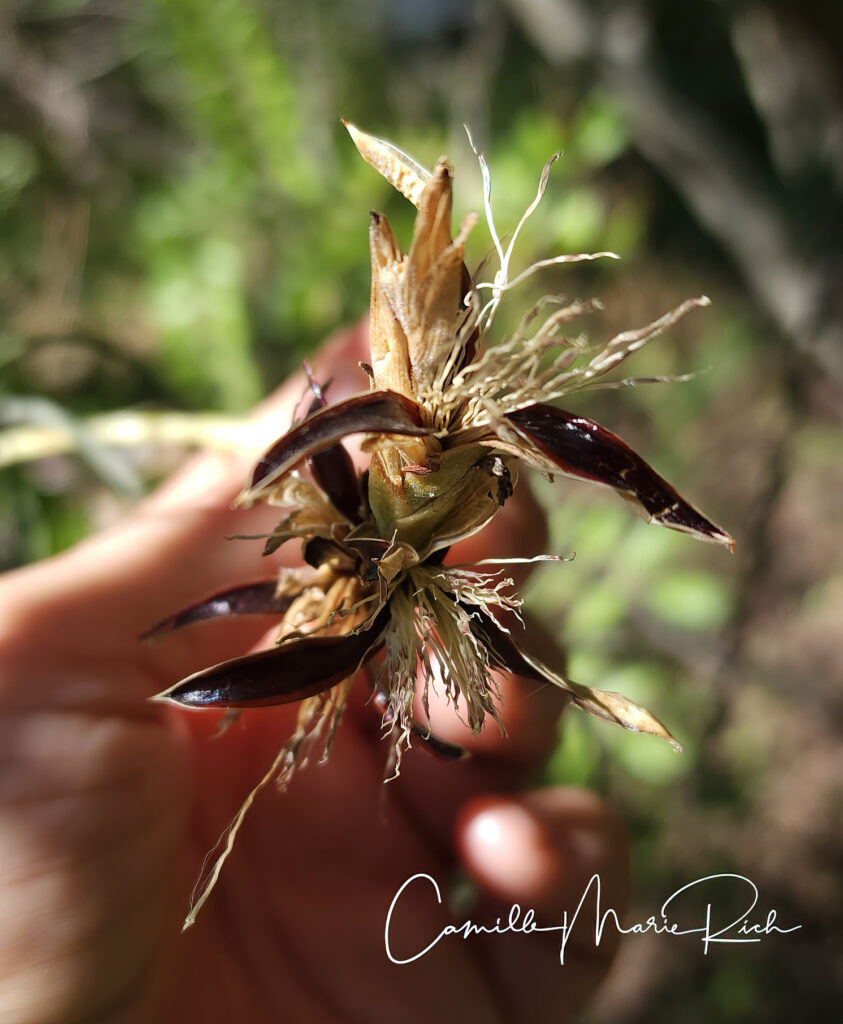

I dropped my watering hose and ran inside the house to grab my cellphone to snap a few pictures of the delicate seeds before picking up the hose again and giving my potted plants a drink of water before the midday sun began to dry them out once again. I studied one of the dried capsules and its filament-like seeds for a few minutes. The intricate features of the entire flower’s structure sparked my natural curiosity about its pollination. My thoughts seemed to logically transition to the following question, “What could have pollinated this lovely little flower? A hummingbird, perhaps?”
Whenever I admire my Bailey’s ball moss, I think of my Grandma Smith and our visits to the Santa Ana Wildlife Refuge in Alamo, Texas. She was fascinated by Spanish Moss and was always dazzled by how it hung from trees high up in the riparian canopy on the refuge trails’ twists and turns. Many treasured moments passed under this canopy as we looked up together and admired the long, textured, living scarf that appeared to be artfully strewn over and draped around the branches hanging above us.
As I reflect on our times looking at plants in the Rio Grande Valley, I know that my Grandma Smith and I never saw any Bailey’s ball moss together. I would have remembered this. Regretfully, I do not know if she ever had the opportunity to see Bailey’s ball moss in person, either. Nevertheless, I know that she would have loved this plant just as much, if not more than I do.

Right about now, you may be wondering why I am mentioning Spanish moss in a story about Bailey’s ball moss. Could Bailey’s ball moss and Spanish moss possibly share something in common? It turns out that they have quite a lot in common. For starters, they are both members of the Bromeliad family, and would you believe that neither one of them is a true moss?
They are also both epiphytes. This means that they do not take any water or nutrients from the host plant material that they cling on to. They are simply using their host plant as an anchor. Instead, Bailey’s ball moss and Spanish moss get their water and nutrients from the air around them.
In Plants of Deep South Texas, we learn that the distribution of Bailey’s ball moss in the Rio Grande Valley is in Cameron, Hidalgo, and Willacy Counties. We also learn that Bailey’s ball moss has an affinity for Ebony trees, and it is threatened by fox squirrels (that were introduced into our area). The squirrels “eat the hearts of the plants, discarding the rest.”
Additionally, in Plants of Deep South Texas, we learn that Spanish Moss is found in Cameron and Hidalgo Counties. “Spanish moss was used extensively for stuffing cushions until synthetic materials became available. A word of warning: various pests can be hiding in Spanish moss.”
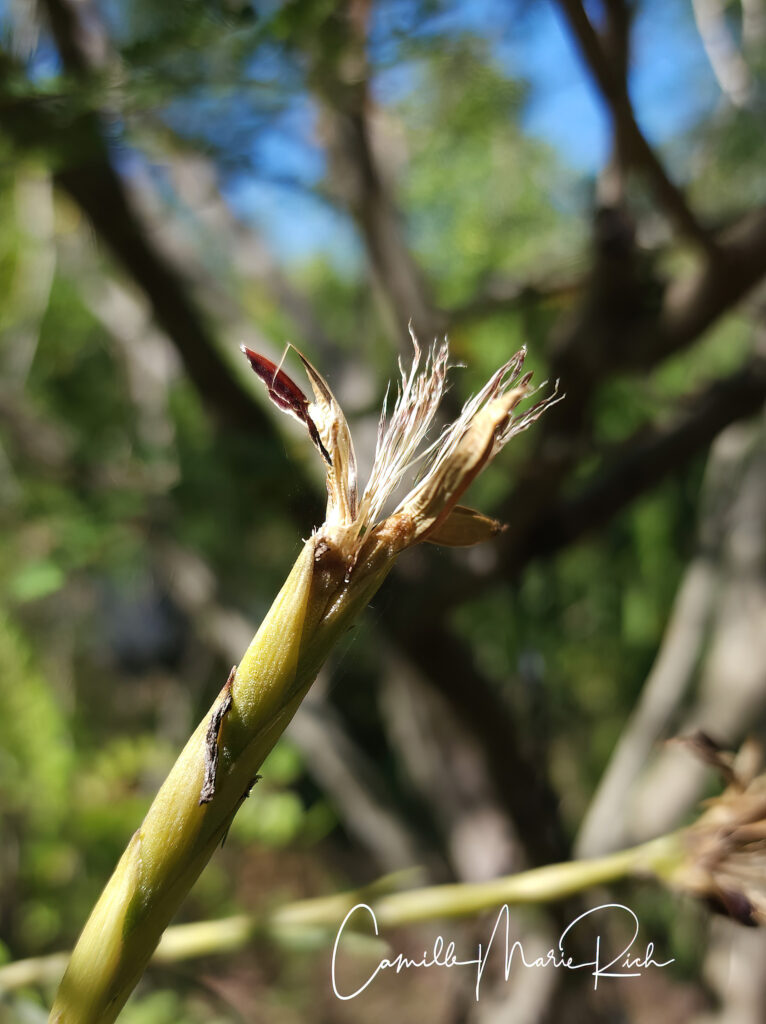
I learned numerous, fascinating pieces of information about Bailey’s Ball Moss in Remarkable Plants of Texas, but there is one fact that practically leapt off the page at me. I was amazed (and awestruck) at the suggestion that because this plant absorbs “multiple airborne trace substances that can be extracted and quantified, and because of their high ratio between surface area and mass…they provide a cheap and easy way to assess air contamination in a given locale.”
Remarkable Plants of Texas also lists some amazing facts about Spanish moss, as well. For example, “Spanish moss has been employed successfully in Brazil to monitor atmospheric mercury in and around gold workshops, and ball moss has been utilized in two industrialized cities in Colombia to ascertain the degree of pollution from heavy metals, pesticides, and polycyclic aromatic hydrocarbons.” Wow.
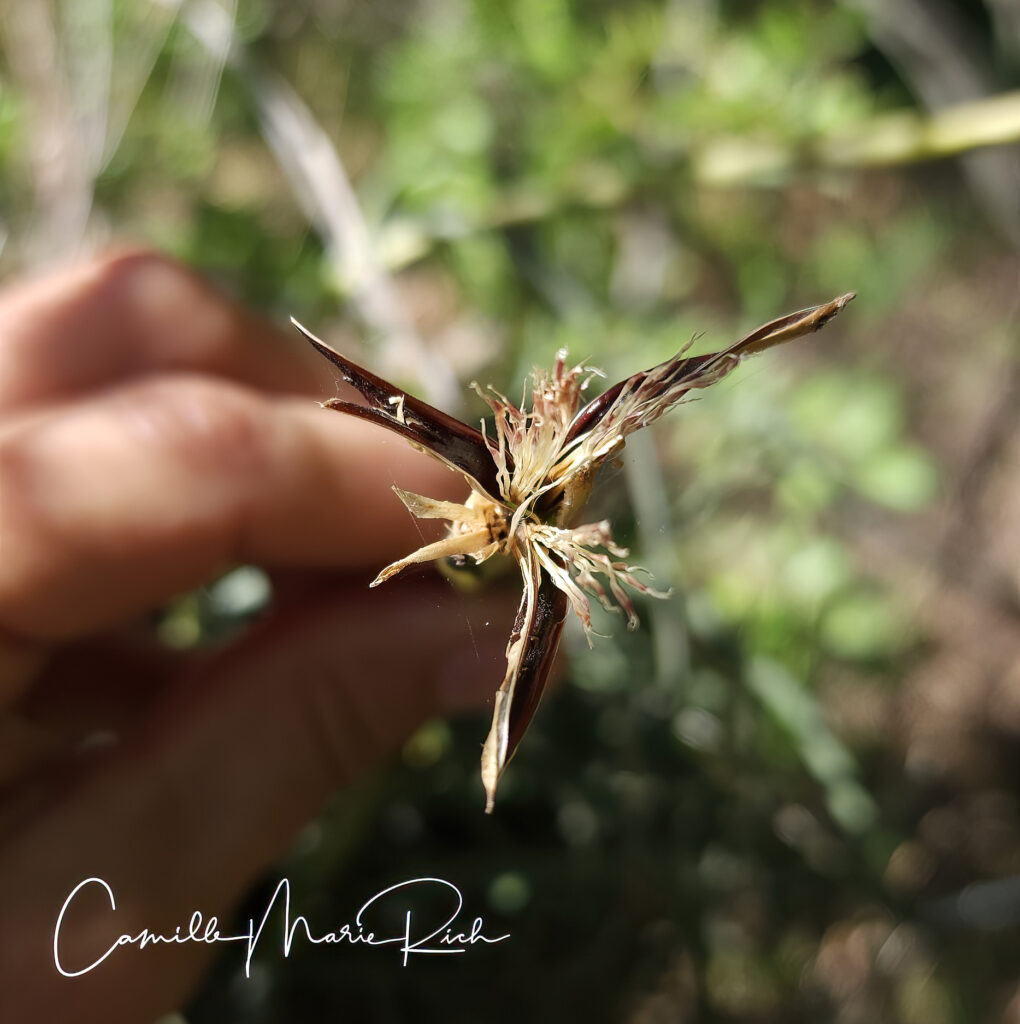
Who would have ever thought that Bailey’s ball moss and Spanish moss are actually “Native Plant Super Heros?” They are key players in the fight against pollution across the world. We must continue to protect, care for, and promote knowledge of and the use of not only these two native plants, but all native plants. Native plants hold so many keys to the history, health, and stability of the ecosystems on our planet. Knowledge is power, and we must unite to spread the word about how important native plants are to our very existence.
In closing, I have to say that I thoroughly enjoyed researching Bailey’s ball moss. I pulled several books from my personal library to locate information for this story. In the process, I learned many new, exciting facts about this unique, treasured plant that hangs in a basket beneath the shade of my Guajillo tree. I invite you to read more about Bailey’s ball moss. In addition to Plants of Deep South Texas and Remarkable Plants of Texas, the following list of texts offer detailed information on this epiphyte as well.

Sources (and Resources):
- Eason, Michael. Wildflowers of Texas. Oregon: Timber Press, Inc, 2018, page 118.
- Richardson, Alfred, and Ken King. Plants of Deep South Texas. College Station: Texas A & M University Press, 2011, pages 28 – 29.
- Poole, Jackie M., William R. Carr, Dana M. Price, & Jason R. Singhurst. Rare Plants of Texas. College Station: Texas A & M University Press, 2007, pages 494 – 495.
- Richardson, Alfred. Wildflowers and Other Plants of Texas Beaches and Islands. Austin: University of Texas Press, 2002, page 26.
- Turner, Matt Warnock. Remarkable Plants of Texas. Austin: University of Texas Press, 2009, pages 278 – 283.
- March 2024
- December 2023
- September 2023
- August 2023
- June 2023
- May 2023
- November 2022
- November 2021
- August 2021
- February 2021
- September 2020
- June 2020
- May 2020
- March 2020
- February 2020
- October 2019
- September 2019
- August 2019
- June 2019
- May 2019
- April 2019
- March 2019
- February 2019
- January 2019
- December 2018


